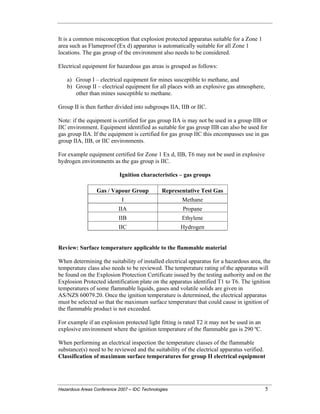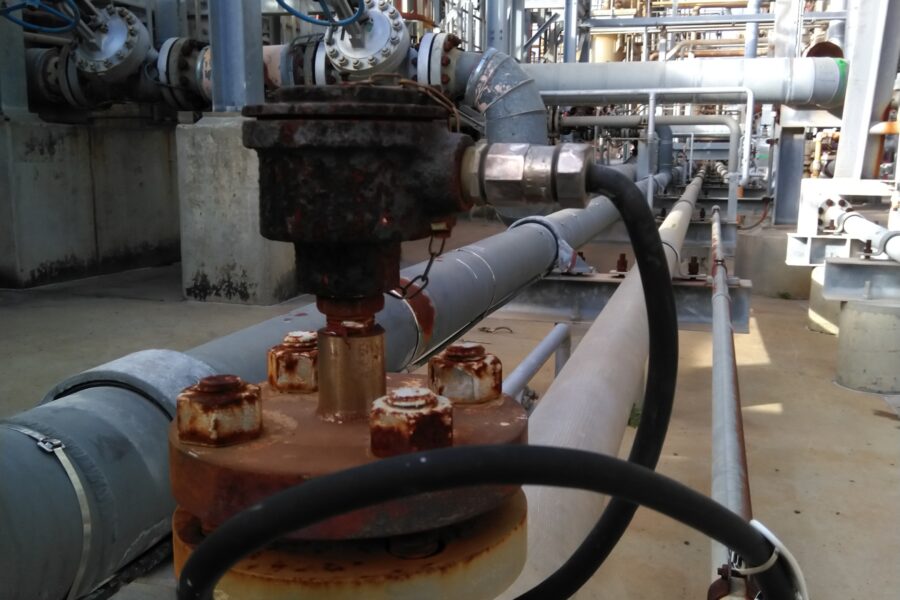Facts About Roar Solutions Uncovered
Facts About Roar Solutions Uncovered
Blog Article
Indicators on Roar Solutions You Need To Know
Table of ContentsExcitement About Roar SolutionsThe Best Guide To Roar Solutions5 Simple Techniques For Roar Solutions
In such an atmosphere a fire or surge is possible when 3 fundamental conditions are met. This is commonly referred to as the "hazardous location" or "combustion" triangle. In order to secure installments from a possible explosion a method of evaluating and categorizing a potentially dangerous location is needed. The purpose of this is to make certain the correct choice and setup of tools to eventually prevent a surge and to guarantee safety of life.
(https://www.bark.com/en/au/company/roar-solutions/Bz3O1R/)
No equipment must be mounted where the surface temperature level of the tools is better than the ignition temperature of the provided danger. Below are some common dust dangerous and their minimum ignition temperature level. Coal Dirt 380C 225C Polythene 420C (thaws) Methyl Cellulose 420C 320C Starch 460C 435C Flour 490C 340C Sugar 490C 460C Grain Dirt 510C 300C Phenolic Resin 530C > 450C Aluminium 590C > 450C PVC 700C > 450C Soot 810C 570C The probability of the danger existing in a concentration high sufficient to trigger an ignition will vary from area to area.
In order to categorize this risk an installation is divided into locations of danger relying on the amount of time the harmful is existing. These locations are referred to as Areas. For gases and vapours and dusts and fibers there are three zones. Zone 0 Zone 20 A hazardous environment is highly most likely to be existing and might exist for lengthy periods of time (> 1000 hours per year) or perhaps constantly Zone 1 Zone 21 A dangerous atmosphere is possible but unlikely to be existing for extended periods of time (> 10 450 C [842 F] A classification of T6 means the minimal ignition temperature level is > 85 C [185 F] Harmful area electrical tools perhaps created for usage in greater ambient temperature levels. This would suggested on the ranking plate e.g. EExe II C T3 Ta + 60C( This indicates at 60C ambient T3 will not be gone beyond) T1 T1, T2, T3, T4, T5, T6 T2 T2, T3, T4, T5, T6 T3 T3, T4, T5, T6 T4 T4, T5, T6 T5 T5, T6 T6 T6 A T Course score of T1 indicates the maximum surface area temperature level created by the instrument at 40 C is 450 C. Presuming the connected T Class and Temperature level ranking for the devices are ideal for the area, you can constantly utilize an instrument with a more strict Department ranking than needed for the area. There isn't a clear response to this inquiry. It really does depend upon the kind of tools and what fixings require to be lugged out. Tools with specific test procedures that can't be executed in the area in order to achieve/maintain 3rd party ranking. Need to come back to the factory if it is before the tools's service. Area Fixing By Authorised Personnel: Challenging testing may not be needed however particular procedures might require to be followed in order for the equipment to preserve its third celebration score. Authorised personnel must be utilized to carry out the work properly Repair service must be a like for like substitute. New element must be thought about as a direct replacement needing no unique screening of the tools after the repair work is complete. Each tool with an unsafe score ought to be reviewed individually. These are laid out at a high level below, but also for more comprehensive information, please refer straight to the guidelines.
The 8-Second Trick For Roar Solutions
The equipment register is a comprehensive data source of equipment records that consists of a minimum set of areas to recognize each thing's place, technological specifications, Ex-spouse classification, age, and ecological data. This info is important for tracking and managing the devices properly within dangerous locations. In contrast, for regular or RBI tasting evaluations, the quality will be a combination of Detailed and Close evaluations. The proportion of In-depth to Shut evaluations will certainly be figured out by the Tools Risk, which is assessed based upon ignition danger (the chance of a source of ignition versus the probability of a combustible atmosphere )and the harmful location classification
( Area 0, 1, or 2). This variant will certainly also affect the resourcing needs for work prep work. Once Lots are specified, you can develop sampling plans based upon the example dimension of each Whole lot, which describes the number of random devices things to be inspected. To figure out the called for example size, 2 facets need to be reviewed: the dimension of the Whole lot and the group of inspection, which indicates the level of effort that ought to be applied( decreased, typical, or increased )to the evaluation of the Lot. By integrating the group of examination with the Lot size, you can then develop the ideal denial standards for an example, suggesting the permitted number of malfunctioning products discovered within that sample. For even more details on this process, please describe the Power Institute Guidelines. The IEC 60079 typical suggests that the maximum period between assessments ought to not exceed three years. EEHA evaluations will additionally be performed beyond RBI campaigns as component of arranged maintenance and equipment overhauls or fixings. These inspections can be attributed towards the RBI sample sizes within the affected Whole lots. EEHA assessments are carried out to identify mistakes in electric tools. A heavy scoring system is important, as a solitary tool might have several faults, each with differing levels of ignition click for more info threat. If the consolidated score of both inspections is much less than twice the mistake score, the Whole lot is considered appropriate. If the Lot is still considered undesirable, it should undertake a complete examination or validation, which may trigger stricter evaluation protocols. Accepted Whole lot: The causes of any mistakes are determined. If an usual failure setting is located, extra tools may call for maintenance. Faults are categorized by severity( Safety and security, Stability, Home cleaning ), guaranteeing that immediate concerns are assessed and addressed immediately to reduce any kind of influence on safety or operations. The EEHA database must track and videotape the lifecycle of mistakes in addition to the corrective activities taken. Implementing a robust Risk-Based Evaluation( RBI )method is vital for ensuring conformity and security in taking care of Electrical Equipment in Hazardous Locations( EEHA) (eeha certificate). Automated Fault Scoring and Lifecycle Management: Effortlessly handle faults and track their lifecycle to boost inspection precision. The intro of this support for risk-based evaluation even more enhances Inspectivity's setting as a best-in-class remedy for governing conformity, as well as for any asset-centric inspection usage case. If you are interested in discovering extra, we welcome you to ask for a demonstration and find just how our service can transform your EEHA monitoring processes.
The Of Roar Solutions

In terms of eruptive danger, a dangerous location is an environment in which an eruptive atmosphere is existing (or might be anticipated to be existing) in amounts that need special preventative measures for the building and construction, installment and use of tools. Roar Training Solutions. In this short article we discover the difficulties dealt with in the work environment, the danger control actions, and the required expertises to work safely
It issues of modern-day life that we manufacture, keep or handle a variety of gases or liquids that are deemed combustible, and a variety of dirts that are deemed flammable. These compounds can, in particular problems, form explosive atmospheres and these can have major and awful effects. The majority of us recognize with the fire triangle eliminate any kind of among the 3 elements and the fire can not happen, however what does this mean in the context of harmful locations? When breaking this down into its simplest terms it is essentially: a combination of a certain amount of launch or leakage of a certain substance or product, blending with ambient oxygen, and the visibility of a source of ignition.
In most instances, we can do little about the levels of oxygen in the air, however we can have considerable impact on resources of ignition, as an example electric devices. Unsafe areas are recorded on the unsafe location classification drawing and are determined on-site by the triangular "EX" indicator. Here, amongst various other essential info, zones are split right into 3 types depending upon the threat, the chance and duration that an explosive atmosphere will certainly exist; Zone 0 or 20 is deemed one of the most hazardous and Area 2 or 22 is regarded the least.
Report this page